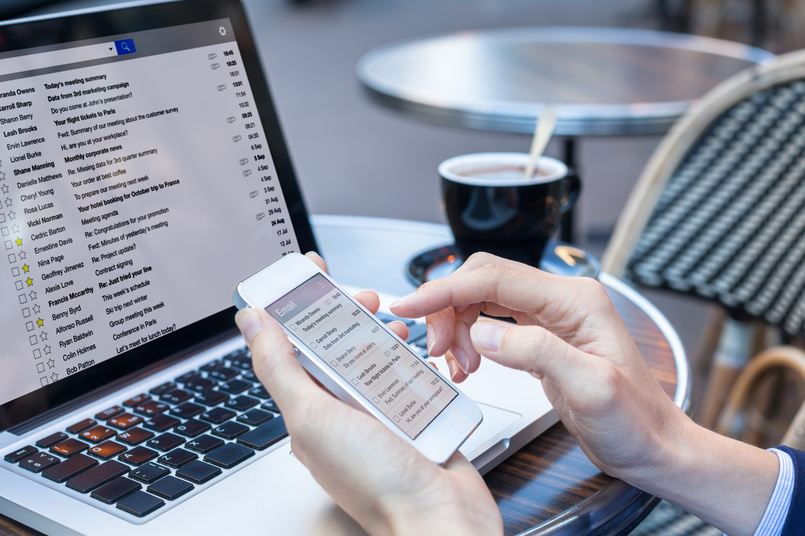“There are four ways, and only four ways, in which we have contact with the world. We are evaluated and classified by these four contacts: what we do, how we look, what we say, and how we say it.” – Dale Carnegie
One of the biggest challenges with email communication is trying to get across emotive or sensitive issues. Email lacks the normal clues you would get if you are sitting down with someone face to face, like body language, tone of voice and facial expressions.
But it’s not just the way we write an email that falls under the umbrella of email etiquette. In fact, there are many dos and don’ts to consider. Many of us will have had some sort on unsettling experience with email communication – a scathing email sent to the wrong person or an embarrassing spelling mistake (be it to you, or from you).
The thing is, once you’ve hit that send button, there’s no going back. Understand the rules of email etiquette with these 10 tips.
Common courtesy
Emails have a way of looking abrupt, even if that’s far from what you intended. It doesn’t take much to show courtesy and you should be portraying politeness to your customers in all forms of communication.
Starting your emails with a friendly ‘hello’ or ‘hi’ is fundamental for a professional business email. Signing off with ‘regards’ or ‘thank you’ is also common courtesy. It’s best to think of it as a business letter and keep the wording as polite as possible.
Respond quickly
As you know, there are those who can be relied on to respond quickly… and those who will keep you waiting. Strive to reply quickly. Being responsive sends a positive message. It shows you are organised and reinforces your interest. Above all, quick responses will put you ahead of competitors.
Every word matters
When you send an email, every word matters. If you are describing a problem or sending instructions, make sure it is defined clearly and keep it short and succinct. Don’t waffle on.
Taking too long to get to the point will confuse or deter the reader. Keep paragraphs short and ensure you’ve delivered your message as concisely as possible.
Don’t yell
Emails with words in capital letters come across as though you’re shouting at the recipient, i.e. PLEASE GET BACK TO ME AS SOON AS YOU CAN. Capital letters look aggressive and can be misconstrued as offensive and unpleasant.
If you’re not a touch-typist and you need to look at your keyboard while typing, be sure to read your email in full before sending it to ensure you haven’t accidentally hit the caps lock button at any point.
Reply to all button
I’m always surprised how few people know about this! If you receive an email with other recipients included, it makes sense to ‘reply to all’ (if appropriate) rather than use the ‘reply’ button which only goes back to the sender.
It can be frustrating to have to forward the reply email on to the others. Ensure that all necessary recipients are included in the email thread.
Sending attachments
It is common courtesy to ask the receiver before you send big files and clog up their inbox. It’s a good idea to check that you both have the correct software and the same version.
External storage sites such as Dropbox and Google Drive are far more efficient for sending large files.
Using emoji’s
Emojis were once frowned upon in business communications but we’ve come to learn that it’s a great way to convey emotions in an email. Adding a smiley face to the end of a sentence can often be the difference between a friendly message and one that leaves the potential for ambiguity.
Include a subject line
Subject lines are so important these days that your email provider will remind you to include one if you hit send before doing so.
Still, even with this prompt, many emails come through as (no subject).
Subject lines allow the recipient to see at a glance what needs to be actioned. It’s very unprofessional to send emails without subject lines and shows a level of laziness and lack of attention to detail.
If you have nothing nice to say, don’t say anything
There are hundreds of horror stories out there of people writing scathing emails about their boss with the intention of sending it to a colleague. Instead – you guessed it – they send it straight to their boss. In many cases, this has cost them their job.
You’re more likely to send the email to the person you’re talking about rather than the person you’re talking to.
There’s a simple solution: don’t use email as a forum for getting things off your chest!
Proofread, proofread, proofread
Poor grammar and spelling are red flags when it comes to being perceived as a trusted business. An email filled with mistakes will have your customers questioning whether you’re the right business to go with.
If this isn’t your speciality, run a spell check over your email before sending it. There are more advanced spell checks available for free download online which not only help with spelling but also grammar and sentence structure.
Read over your email a few times before hitting send. This simple step could be the make or break of retaining or acquiring customers.

Emails are one of the most common forms of business communication and, over time, have developed a list of etiquette rules and expectations.
Don’t be sloppy with your business emails. Proofread them, take care with your wording and remember your manners.
We give a lot of advice to businesses looking to enhance their online presence and email etiquette is all part of it. If you’re yet to discover the benefits of SEO and content marketing, give us a call today.





